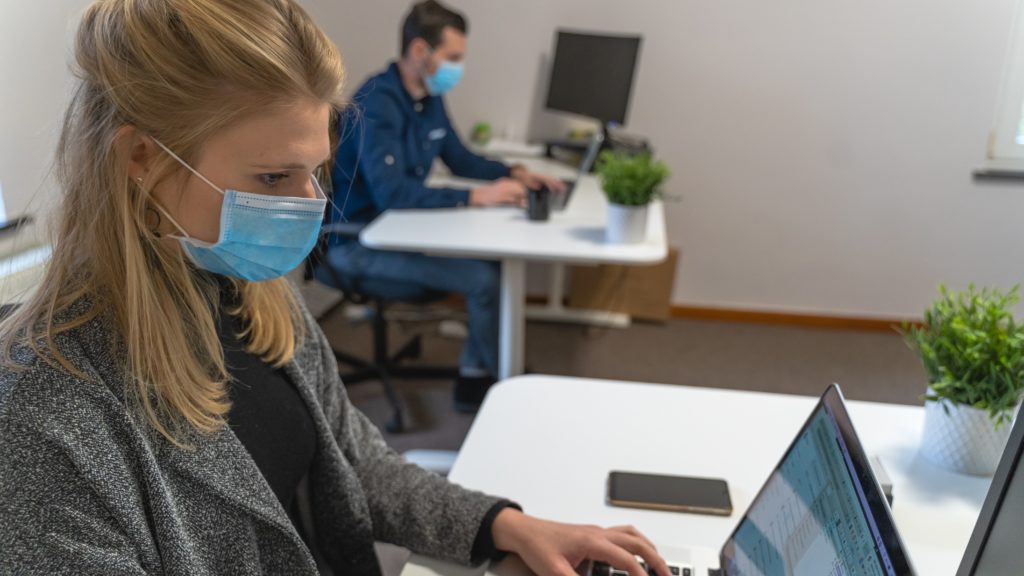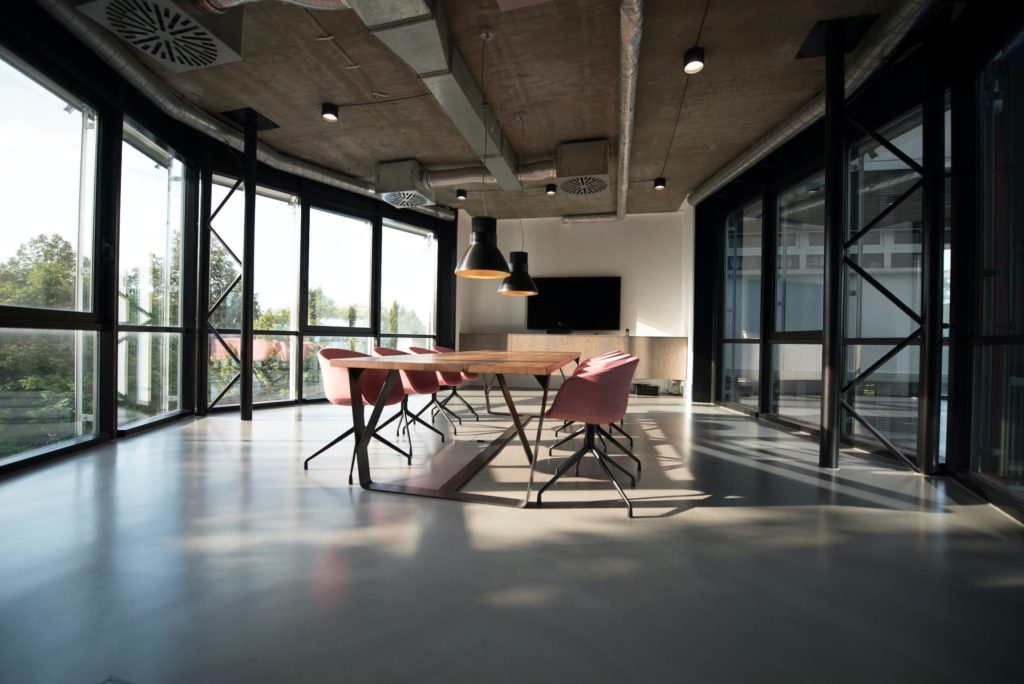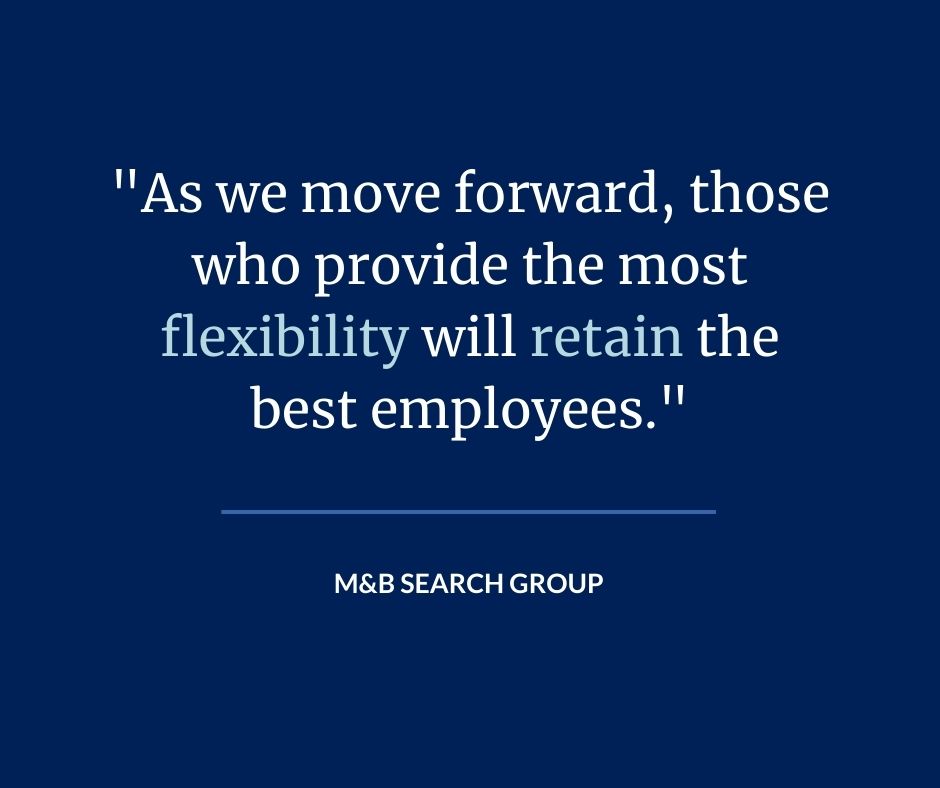Blog
What We’ve Learned from the Pandemic and Considerations as You Establish Your New Normal
When much of the country locked down in response to the coronavirus, employers faced unprecedented challenges. Now, as workers begin to trickle back into the office, business leaders must decide if it’s back to “business as usual”, or if not, what the “new usual” entails.
This is new territory for all of us. We’ve learned a lot over the last year and half, and we are all still navigating this ever-changing working world. Moving forward, we must consider what we’ve learned, and know the possible implications the decisions we make today have on our future.
What We’ve Learned From the Pandemic
We can be innovative
A lot of corporate red tape has been cut during the pandemic. Years of innovation happened at a rapid pace as working from home, virtual meetings, paperless tools, and flexible working hours became the necessary norm. Companies pivoted, evolved, and innovated to meet the immediate need, and we’ve seen that businesses are capable of innovating in ways we couldn’t have imagined.
People can be productive at home


Nearly 70% of U.S. employees worked from home at the peak of the pandemic, more than ever before. Fears about employees being unproductive at home have been dispelled, and companies have seen that their teams can, in fact, be productive at home. A study of more than 800,000 workers found that productivity levels increased after employees started working from home.
People want hybrid work environments
Workers were forced to work from home, and many discovered that they liked it. The consensus among our candidates is that they want a hybrid work environment — one where they have the flexibility to work from home. This is consistent with a global survey conducted by Global Workplace Analytics, which found that:
- 82% of U.S. employees want to work from home at least some of the time when the pandemic is over
- Only 8% do not want to work from home
- 19% would want to work from home every day
Yes, it can be done virtually
Things that felt uncomfortable and very temporary at the beginning of the pandemic have become routine. Companies are interviewing job candidates and making hiring decisions without ever meeting them in-person. Sales people spent more time on video conferences than on airplanes. It’s been remarkable to see workplaces use technology in new and innovative ways to get their jobs done.
Health protocols have become an integral part of the workplace


We’ve learned that office environments are not pandemic-proof, and sanitation and hygiene has become the heart of office planning. Employees are concerned about their safety, and employers are also concerned about the potential for liability. “Sneeze guards”, hand washing stations, socially-distanced desks, health screenings and mask mandates have been put in place to keep everyone safe.
Things to Consider Moving Forward


Now that many companies see they can be productive with work-from-home models (and may be even more productive,) the big question moving forward is how and if the office should be used.
The number of remote workers in the next five years is expected to be nearly double what it was before COVID-19, according to a recent report. Your industry may dictate whether or not you decide to permanently offer a flexible working environment, but if it’s an option for you, there are many factors that can influence your decision.
Here are some considerations when planning your ideal post-pandemic workplace.
The purpose of your office might be different
In a world of digital tools and resources, it’s important to hone in on the purpose of your office. Is it to help new hires learn from colleagues? Or a playground of collaboration? Is it to facilitate a strong corporate culture? Or a way for bosses to oversee work? Taking the time to identify what the purpose of your physical office space is can help you determine everything from who returns and how often to the size and layout of the space.
What your employees want may or may not align with what you want
Do your employees want to be back in the office, or do they like having some flexibility to work from home? Consider surveying your company to get a sense of what they want and inform your decisions. As we move forward, those who provide the most flexibility will retain the best employees.


Your decisions could cause you to lose talent
If a vast majority of your employees want to work remotely and you suddenly require everyone to return to the office, you may struggle to retain talent as they search for an employer who is more flexible. We’ve learned that most people prefer a hybrid work environment, so those that require the traditional full-time, in-person, nine-to-five structure may struggle with retention and recruitment.
Maintaining the company culture could require creativity
Having a remote-friendly working environment doesn’t have to dilute your corporate culture. Creating culture just requires some outside-the-box thinking.
The VP of Human Resources for our client in the digital marketing industry said that when the company initially transitioned to a remote work environment, they ensured communication was constant and held company Town Hall events. These events were hosted by their CEO and other leadership team members to keep everyone on the same page with company initiatives and strategic goals. The company also hosted virtual events such as March Madness, trivia contests, Secret Santa, and virtual happy hours.
“Having strong supervisors that have supported teams in virtual environments and leadership that understand that the typical company picnic or employee of the month won’t be enough is key to the success of any remote company,” they said.
Your liability as an employer may grow
In addition to keeping your people happy and culture strong, you also need to consider your liability as an employer. For example, if you have remote workers in multiple states, you’ll need to consider payroll taxes. If you have some or all employees working in the office, there could be some health and safety liability, which leads us to…
Vaccination and health protocols need to be considered
Vaccine-related guidance continues to change, but employers in most states can legally ask their employees about their vaccine status and can even make vaccination a mandate if workers are required to come into the office. Decisions surrounding vaccination requirements and other health protocols (hand washing stations, mask requirements, etc.), need to be considered as we continue to navigate the pandemic.
Young hires may feel left behind
Young people entering the workforce are worried about being left behind: 40% of college students and recent graduates polled said they prefer fully in-person work. They fear they will miss out on mentoring and office community experiences. If you’re offering a hybrid or remote model, consider how you will ensure your new hires experience your company’s culture and gain valuable skills by working with peers and leaders.
Embracing flexibility could help your bottom line
Many companies started seeing cost savings through less travel and less need for big office space, but the biggest source of cost savings is surprising. Large businesses (500+ employees) could save an average of $11.3 million per year if they move to remote work for half the work week, with most savings coming from increased productivity and employees spending their commute time working.
Whenever there is a huge change in our world it is always good to look back on what we learned from it and how we have changed from it. We saw this in the recession in 2008 when companies changed how they did business.
The pandemic could be the biggest launching pad for change that we’ll see in our careers, and those who embrace change will likely be the most successful.
Like what you're reading?
Subscribe today for insightful posts delivered via email. We respect your privacy and won't spam your inbox.
